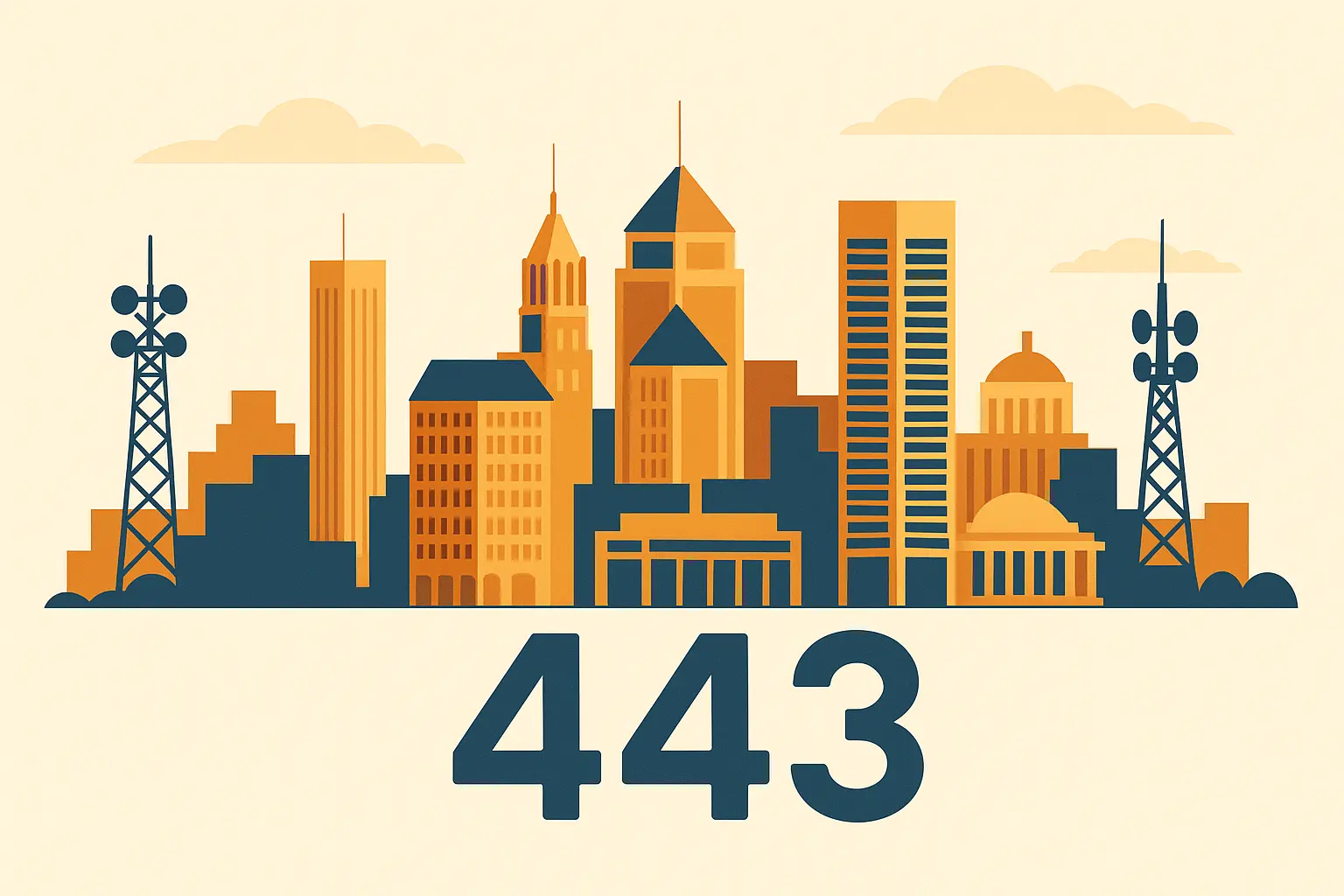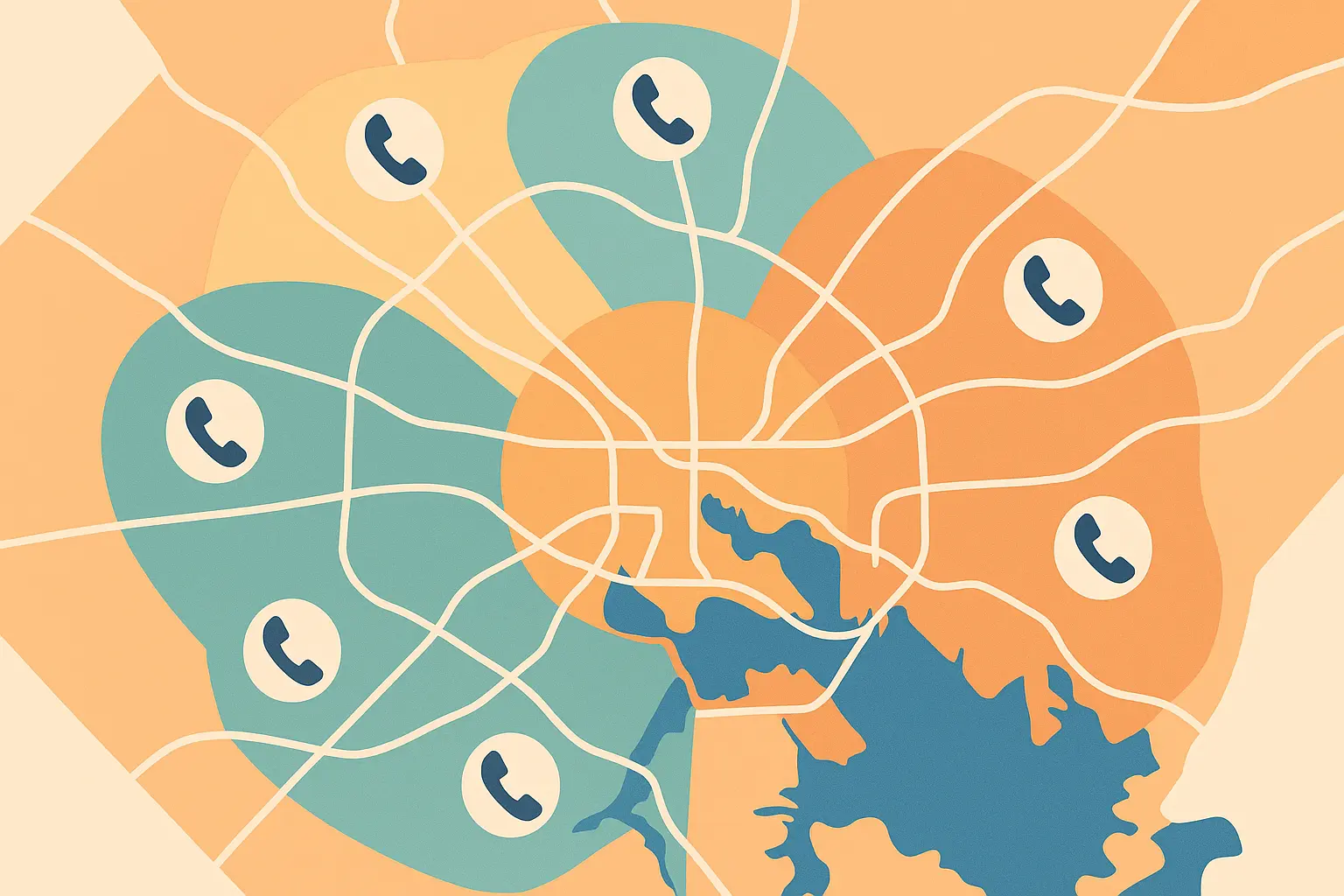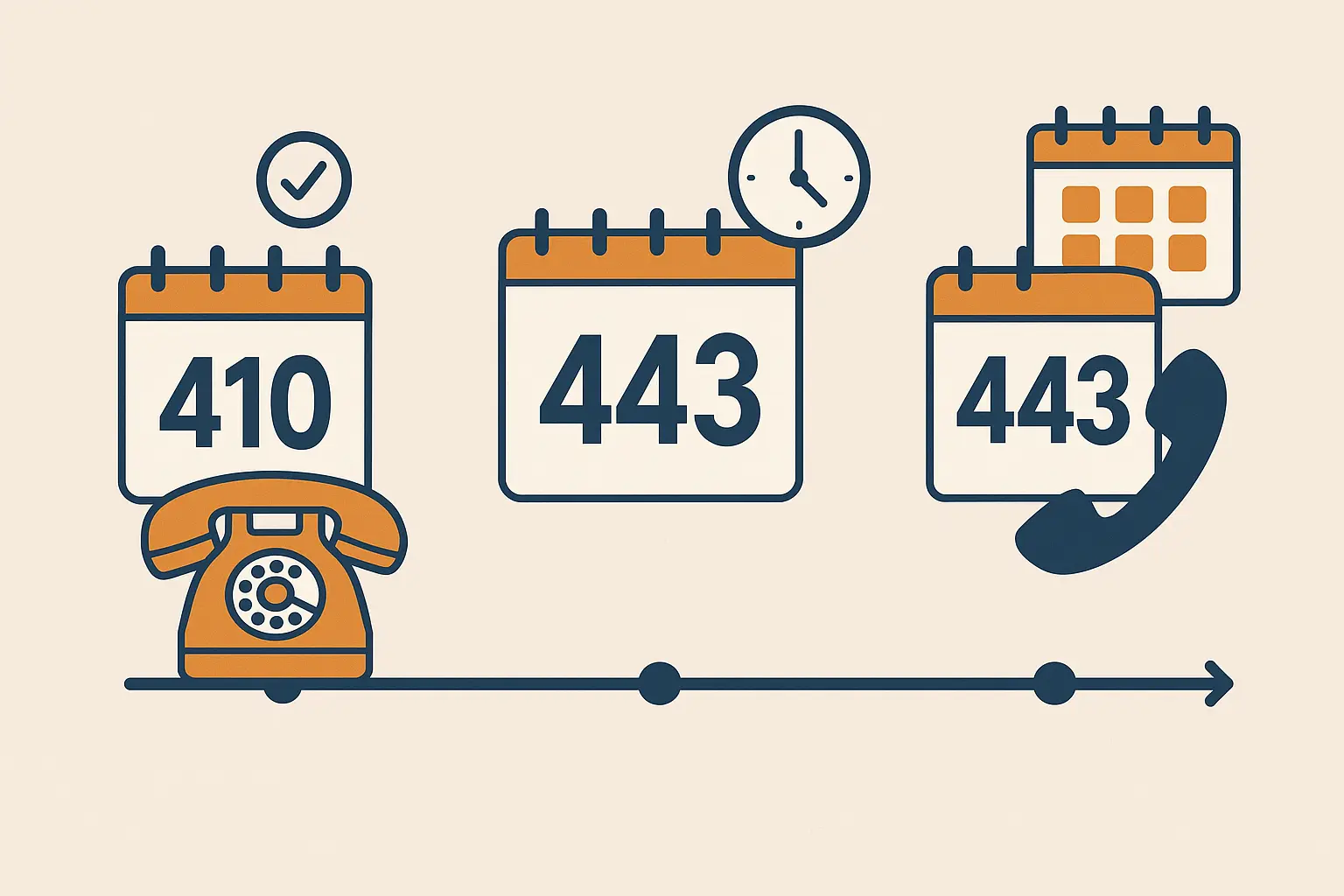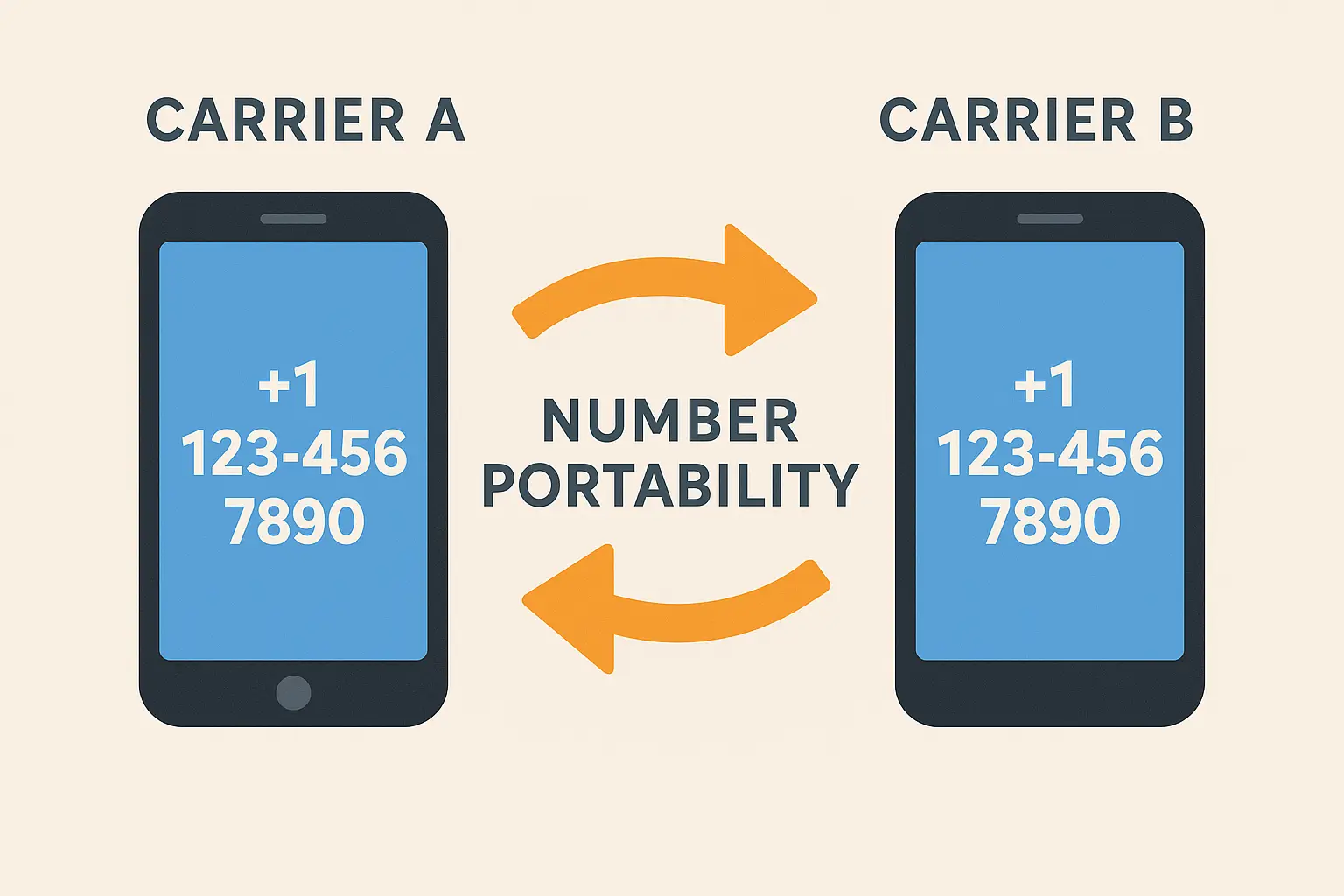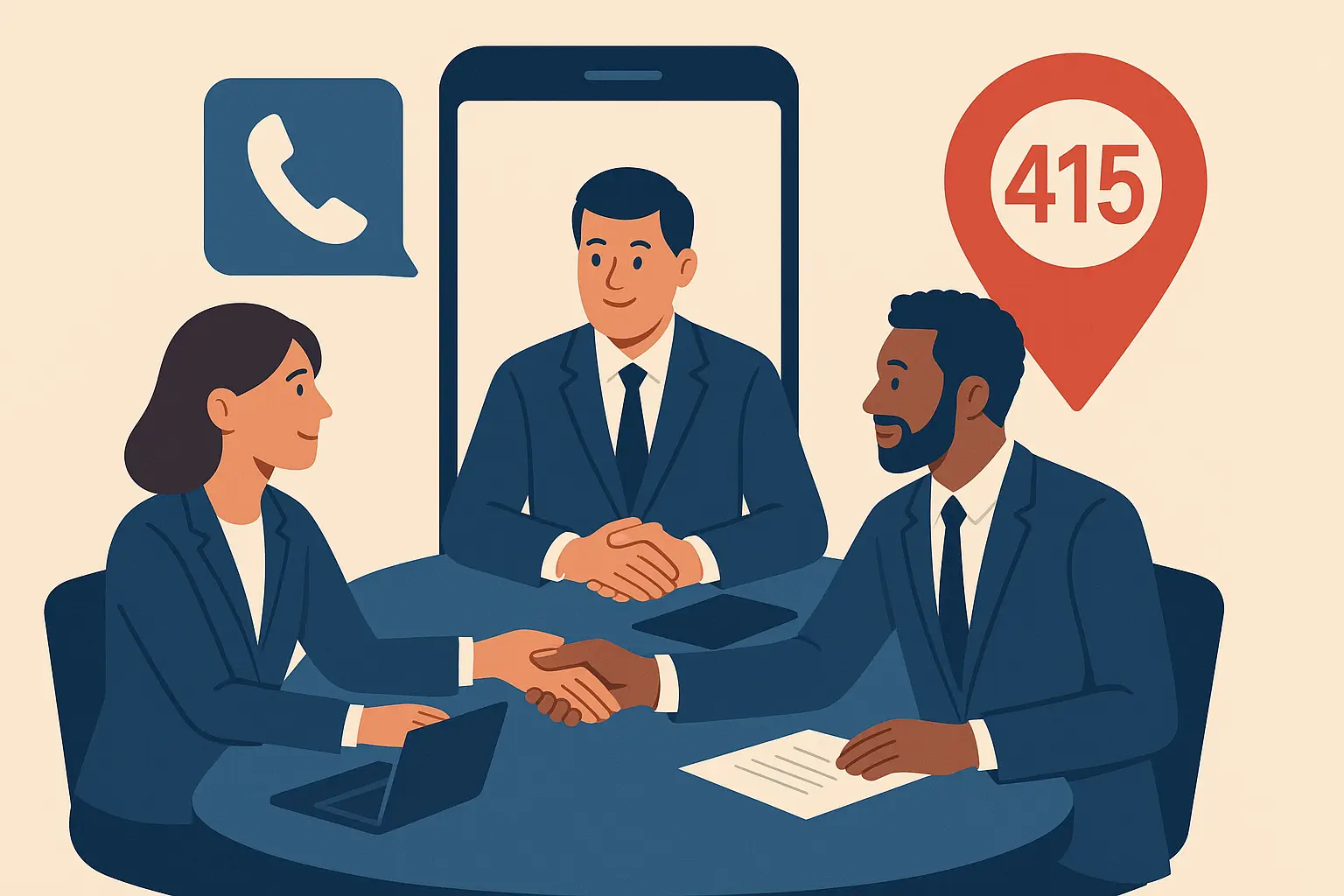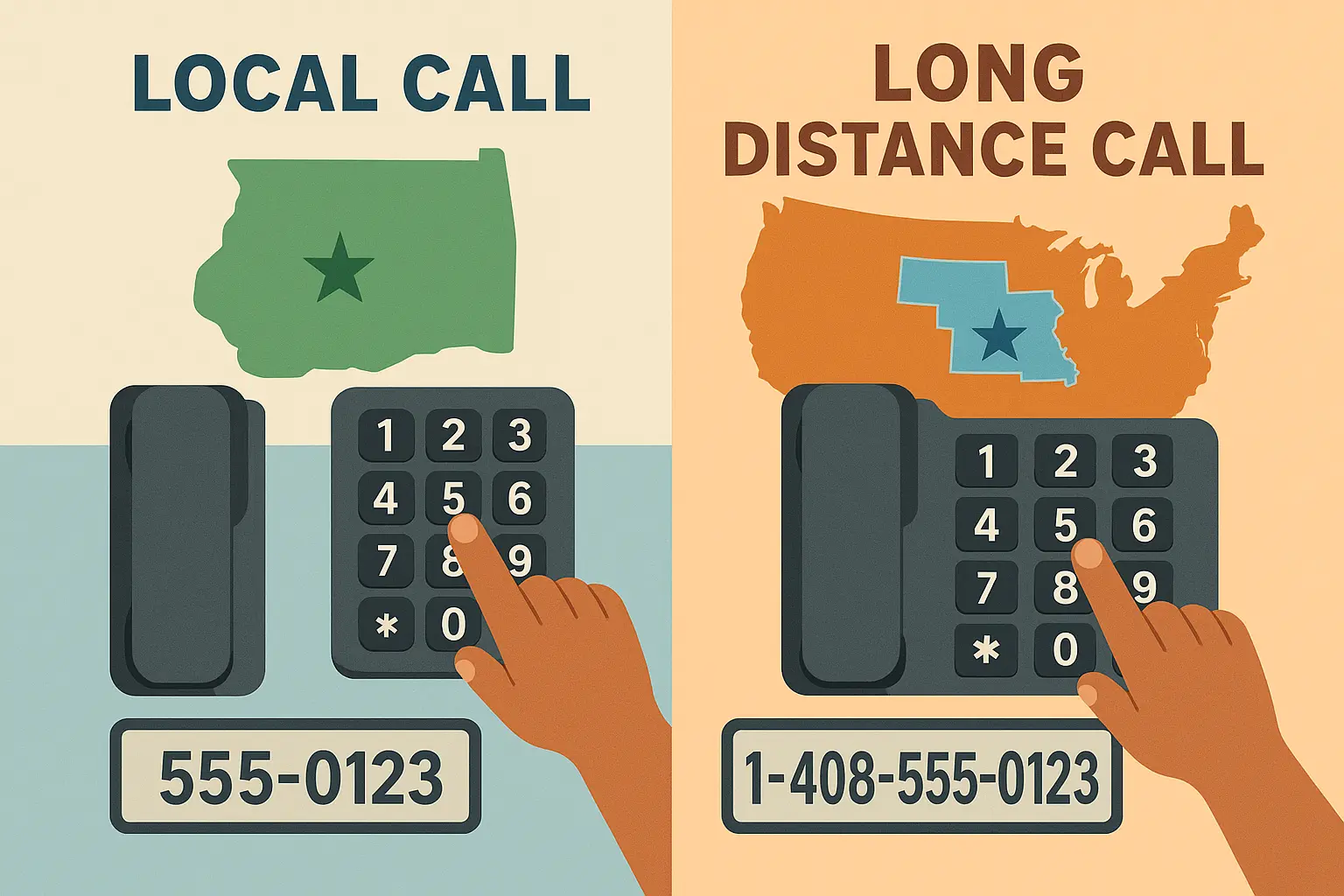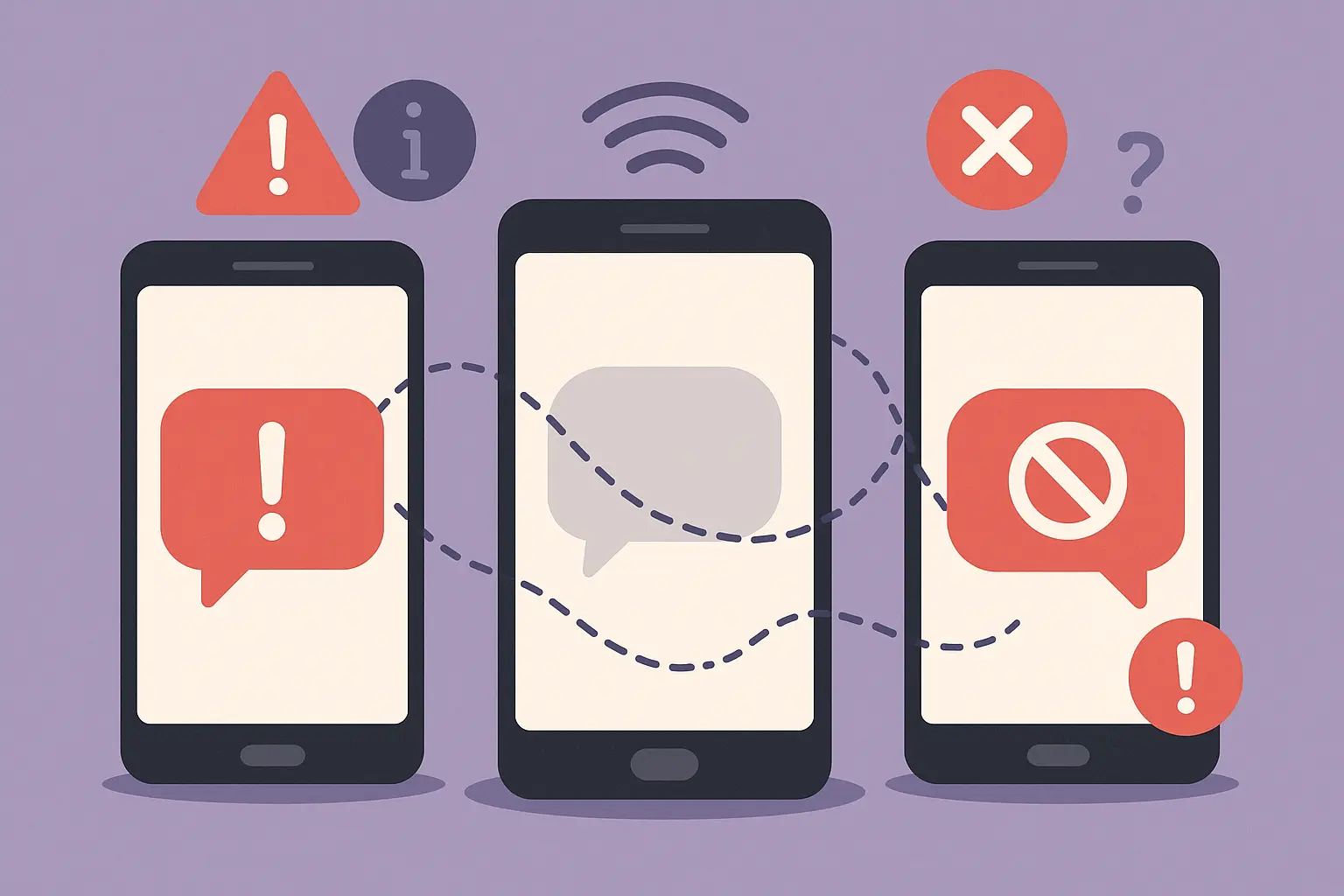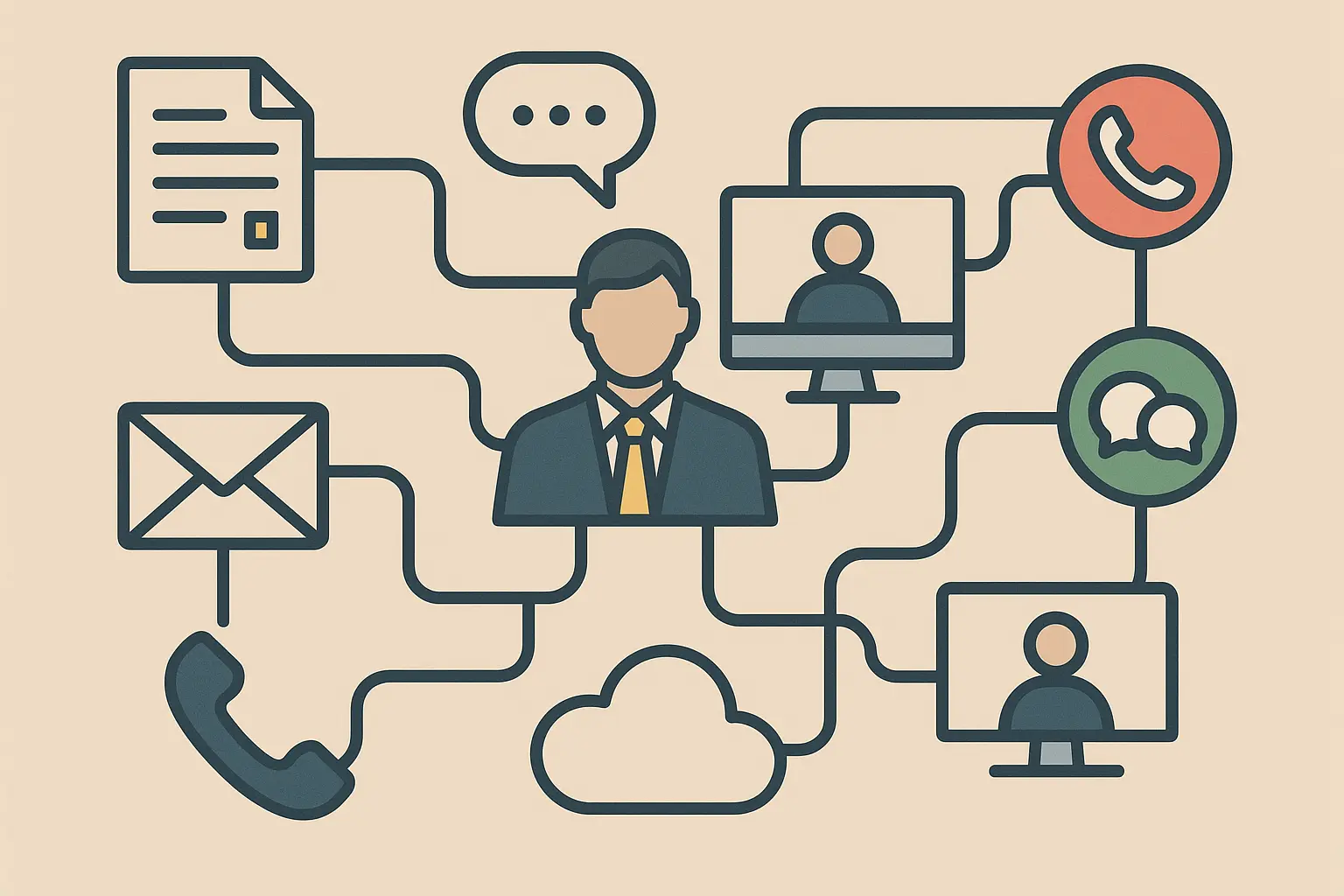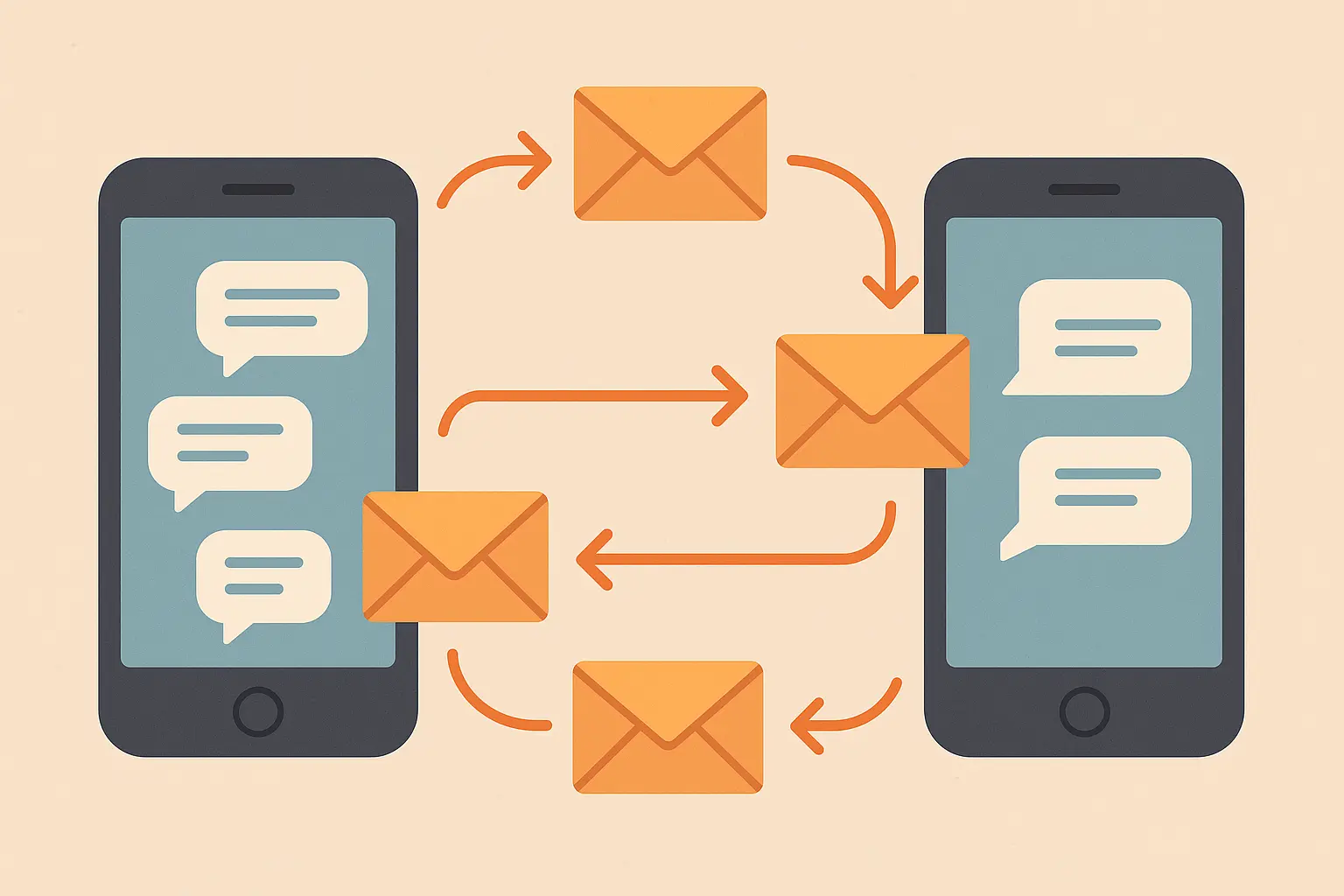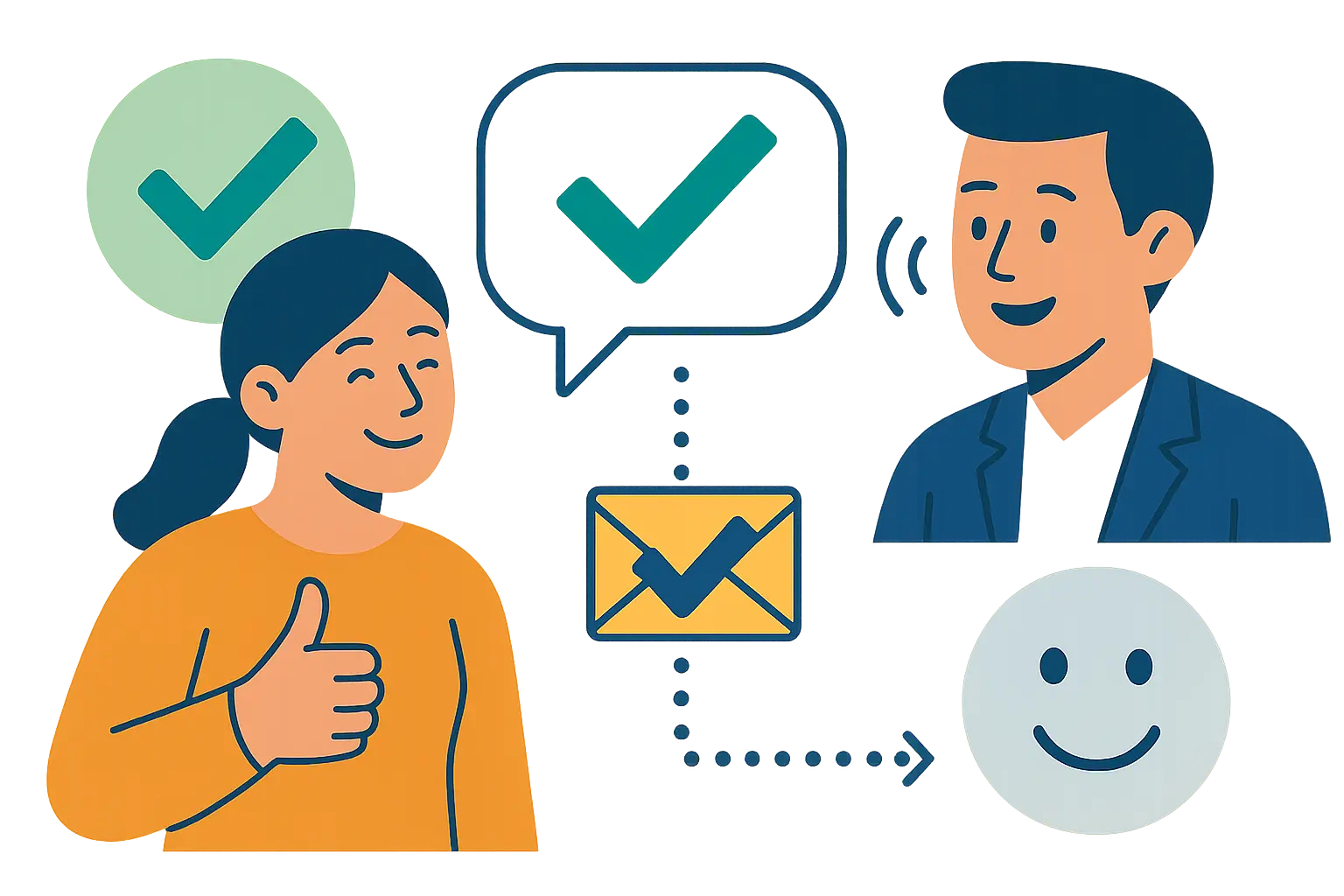Ever wonder why some Baltimore businesses seem to have an edge? It’s not just location – it’s their phone number. The 443 area code covers 2.45 million people across central Maryland, but there’s way more to this story than most locals realize.
Table of Contents
Table of Contents
-
Where 443 Really Covers (Hint: It’s Not Just Baltimore)
-
Why 443 Exists (The Real Story Behind Its Creation)
-
Getting a 443 Number (Harder Than You’d Think)
-
Business Perks of Having a 443 Number
-
Dialing Rules That Trip Everyone Up
-
Modern SMS Headaches with 443
-
How Auto Forward SMS Fixes Your 443 Text Problems
Quick Summary
-
443 shares territory with 410 across Baltimore and surrounding counties
-
You must dial 10 digits for ALL calls, even to your next-door neighbor
-
Getting a good 443 number takes strategy – availability varies wildly
-
Local credibility from 443 can boost your business response rates
-
All 443 numbers run on Eastern Time
-
SMS gets messy with 443 numbers, but Auto Forward SMS can help by sending your texts to email
Where 443 Really Covers (Hint: It’s Not Just Baltimore)
Most people think 443 only covers Baltimore city. Wrong. This area code stretches across multiple counties, serving everyone from downtown professionals to suburban families in Howard County.
The coverage includes about 1.47 million phone numbers across central Maryland. That’s a massive network serving both urban Baltimore and the sprawling suburbs around it.
The Heart of 443: Baltimore Metro
Baltimore City and Baltimore County form the core, serving over 600,000 residents. This includes everything from the Inner Harbor’s business district to residential neighborhoods scattered across the county.
The sheer number of people packed into this area is what created the need for 443 in the first place. When you’ve got this many businesses, residents, and devices all needing phone numbers, the original 410 system couldn’t keep up.
|
Area |
Population |
Main Industries |
|---|---|---|
|
Baltimore City |
585,000+ |
Healthcare, Education, Government |
|
Baltimore County |
854,000+ |
Tech, Manufacturing, Services |
|
Anne Arundel County |
588,000+ |
Defense, Aerospace, Maritime |
|
Howard County |
332,000+ |
Tech, Professional Services |
|
Harford County (partial) |
92,000+ |
Agriculture, Manufacturing |
Each area brings different opportunities. A consulting firm in Columbia uses their 443 number to serve tech startups in Baltimore and manufacturing companies in Harford County – all with one local-looking number.
Beyond Baltimore: The Extended Reach
The 443 coverage extends into Anne Arundel, Howard, and parts of Harford County. This means your 443 number connects you to diverse communities, from suburban developments to rural areas.
Each county brings different demographics and business opportunities into the network. The extended reach gives businesses access to markets ranging from urban professionals to suburban families to rural enterprises.
How 443 and 410 Work Together
Here’s what confuses people: 443 doesn’t replace 410. They work together as an “overlay system.” Both area codes serve the same geographic area, doubling the available phone numbers without forcing anyone to change their existing 410 number.
Think of it like adding a second layer of numbers to the same region. Old 410 users kept their numbers, while new customers could get 443 numbers in the same neighborhoods. Understanding how overlay systems function is crucial for businesses managing communications across multiple area codes, similar to how companies need to understand US phone number format when dealing with national clients.
Why 443 Exists (The Real Story Behind Its Creation)
Baltimore was running out of phone numbers. That’s it. Not growing geographically – just burning through available numbers faster than anyone expected.
When 443 launched in 1997, it was the height of the telecom boom. Everyone wanted cell phones, fax machines, pagers, and early internet connections. Each device needed its own number, and the Baltimore area was consuming them at breakneck speed.
Maryland’s Phone Number Evolution
Originally, all of Maryland used 301. In 1991, the state split up, giving Baltimore the 410 area code. Just six years later, even 410 couldn’t handle the demand.
By 2012, Maryland was already preparing for a third overlay (667) because The Daily Record reported they were down to about 17,000 available numbers across both 410 and 443, with officials noting “there aren’t very many 410 and 443 numbers left.” That’s how fast this region burns through phone numbers.
The 1997 Launch and Its Impact
When 443 went live, it changed how everyone in Baltimore handled phone calls. Suddenly, you couldn’t just dial seven digits anymore – every call needed the full area code.
Business owners had to retrain staff, update marketing materials, and explain the new system to confused customers. But it worked, providing the numbering capacity Baltimore desperately needed.
The transition benefited from lessons learned during other area code implementations across the country. Maryland telecommunications officials had seen problems in other regions and tried to minimize disruption during the rollout.
Eastern Time Zone Consistency
Every 443 number operates in Eastern Time, following both standard and daylight saving time. This makes business coordination simple – no time zone math required when dealing with any 443 number.
The UTC-5 (standard) and UTC-4 (daylight) offsets align with major East Coast business centers. When you’re coordinating meetings or scheduling service calls across the region, everyone operates on the same schedule.
Getting a 443 Number (Harder Than You’d Think)
Don’t just call any carrier asking for a 443 number. Availability varies wildly, and the good numbers disappear fast. Each carrier maintains different inventory, so shopping around actually matters.
The process involves more than just requesting any available number. Each carrier maintains different inventory levels, and popular number patterns disappear quickly in a market this size.
Carrier Inventory Differences
Verizon, AT&T, T-Mobile, and regional carriers all have different 443 numbers available. What’s unavailable at one carrier might be sitting in another’s inventory.
But here’s the catch: the carrier you choose affects your service quality and pricing. Some businesses switch carriers just to get a better number, only to discover poor coverage in their area.
443 Number Shopping Checklist:
-
Contact multiple carriers for availability
-
Test coverage quality in your specific area
-
Compare pricing and monthly fees
-
Check for premium number charges
-
Confirm number portability rules
-
Review contract terms
-
Test call quality during busy hours
The competitive market means carriers sometimes hold back their best numbers for premium pricing tiers or long-term contract customers.
Number Portability Rules
Federal regulations allow you to keep your 443 number when switching carriers, but the process has specific requirements and timelines. You’ll need documentation and should expect potential service interruptions.
Understanding these portability rules becomes crucial if you’re building a business around a specific number. The last thing you want is to lose a memorable number because you didn’t follow proper procedures.
Premium Numbers and Waiting Lists
Want a 443 number with repeating digits or easy-to-remember patterns? Expect premium pricing or waiting lists. These numbers are marketing gold in an affluent area like Baltimore.
According to ZipAtlas income data, the median household income in the 443 region is $98,559, indicating an affluent customer base that values premium services and is willing to invest in memorable business phone numbers for marketing advantages.
This affluent demographic means premium number options often get snapped up quickly by businesses that understand the marketing value of memorable numbers.
Porting Numbers From Other Areas
Moving to Baltimore? You might be able to port your existing number to 443, though this requires documentation and several business days. Not all numbers are eligible for porting into the system.
When porting numbers from other regions, businesses often need to enter phone numbers in international format for proper documentation and carrier verification.
The porting rules can be particularly strict because of high demand for numbers in this region. Carriers want to ensure they’re not losing valuable inventory without proper justification.
Business Perks of Having a 443 Number
A 443 number does more than provide local presence – it builds instant trust with Baltimore customers and can seriously boost your marketing response rates.
When customers see 443, they know you’re part of their community. This creates a connection that toll-free or out-of-area numbers can’t match.
Local Credibility That Actually Works
Baltimore customers prefer businesses with local area codes. They see them as more accessible and community-oriented. It suggests you understand local needs and can provide in-person service if needed.
One home renovation company switched from an 800 number to 443 and saw their lead conversion rate jump 23%. Homeowners felt more confident calling a contractor with a Baltimore area code, assuming they could easily visit the business location and verify credentials through local references.
This credibility boost becomes even more pronounced in service industries where customers want to know they can find you if something goes wrong.
Better Marketing Response Rates
Marketing campaigns using 443 numbers typically see higher response rates than toll-free or out-of-area numbers. Local area codes reduce the perception that you’re running a generic mass campaign.
This advantage shows up in direct mail, local advertising, and cold calling. When people see 443 in your marketing, they know you’re specifically targeting their community rather than blasting the same message nationwide.
Professional Services Benefits
Law firms, medical practices, and consulting services benefit hugely from 443 numbers. These industries rely on trust and local reputation, making the area code part of their professional identity.
Clients feel more comfortable sharing sensitive information with providers who have local numbers. There’s something about a 443 area code that suggests you’re part of the local professional community rather than a distant corporate entity.
The professional network is tight-knit enough that having a local number can actually help with referrals and professional relationships within the Baltimore business community.
Multi-Location Strategy
Companies with multiple locations can use 443 numbers strategically while routing calls to centralized operations. This maintains local presence while allowing efficient call management from anywhere.
The routing flexibility means you can appear local without necessarily maintaining physical offices in every area you serve. The broad coverage means a single number can serve customers across multiple counties while still appearing local to each community.
Dialing Rules That Trip Everyone Up
Here’s what catches people off guard: because 443 shares territory with 410, you can’t dial just seven digits for local calls anymore. Every call requires the full 10-digit format.
These rules affect both personal and business communications in ways that aren’t immediately obvious. Visitors to Baltimore struggle with this requirement, not understanding why their seven-digit dialing attempts keep failing.
10-Digit Dialing for Everything
Every call within Baltimore requires 10 digits, even when calling your neighbor down the street. The phone system can’t tell if a seven-digit number belongs to 410 or 443.
This has become more common nationwide. The Philadelphia Inquirer reports that 82 area codes in 35 states have switched to 10-digit dialing, largely driven by the Federal Communications Commission’s implementation of 988 as a national suicide prevention hotline, requiring area codes to distinguish local calls from the emergency service.
443 Dialing Quick Reference:
-
Local calls within Baltimore region: 443-XXX-XXXX (full 10 digits required)
-
Calls to other 443 numbers: 443-XXX-XXXX (full 10 digits required)
-
Calls to 410 numbers: 410-XXX-XXXX (full 10 digits required)
-
Emergency services: 911 (3 digits only)
-
Directory assistance: 411 (3 digits only)
-
Long-distance outside region: 1-XXX-XXX-XXXX (1 + 10 digits)
Your muscle memory has to adjust to always including the area code, even for neighbors down the street. Forgetting those three extra digits means your call won’t go through at all.
Local vs. Long-Distance Distinctions
Calls between 443 and 410 numbers count as local calls, even with different area codes. But calls outside the Baltimore region follow standard long-distance protocols and pricing.
This affects your phone bill and calling plan selection, especially for businesses making frequent calls. The local calling zone is actually quite generous compared to some other metropolitan areas.
|
Call Type |
Format |
Rate |
Coverage |
|
|---|---|---|---|---|
|
Local |
Local 443 to 443 |
443-XXX-XXXX |
Local |
Same region |
|
Local 443 to 410 |
410-XXX-XXXX |
Local |
Same region |
|
|
Regional MD |
1-301-XXX-XXXX |
Regional |
Western MD |
|
|
Long Distance |
1-XXX-XXX-XXXX |
Long distance |
Outside MD |
|
|
International |
011-country-city-number |
International |
Outside US |
Many businesses discover these billing distinctions the hard way when they receive their first monthly phone bill after getting a 443 number.
Modern SMS Headaches with 443
While 443 numbers work great for voice calls, they create headaches in today’s text-heavy world. Businesses using 443 often struggle with SMS reliability, message sync across devices, and integrating texts with digital workflows.
These problems get worse as companies rely more on texting for customer service and operations. The local credibility might give you an edge, but it doesn’t solve the technical limitations that plague modern SMS systems.
SMS Reliability Problems
Network issues, device limitations, and carrier restrictions can cause important texts from 443 numbers to disappear or arrive hours late. Unlike voice calls, failed texts often give no error notification.
With 66.4% of people in the labor force within the 443 region according to ZipAtlas employment data, business communication reliability becomes critical for maintaining productivity and customer satisfaction across this economically active population.
Many businesses discover they need to forward text messages to email addresses to ensure critical communications from their 443 numbers don’t get lost due to device or network issues. The economic activity level means that missed messages can have serious financial consequences.
Multi-Device Access Problems
Business professionals need to access their 443 texts across phones, tablets, and computers, but standard SMS doesn’t sync properly between devices. Important messages might only appear on one device.
The problem gets worse when team members need shared access to business SMS communications. A Baltimore real estate agent missed a time-sensitive offer because the client’s text only appeared on her office phone while she was out showing properties on her tablet. The lack of SMS sync cost her a $15,000 commission and damaged relationships with both buyer and seller.
Professional teams often need to forward text messages to Slack channels to ensure everyone stays informed about important client communications from their 443 business numbers. The business pace demands better coordination than standard SMS can provide.
Integration Challenges
Modern businesses want to integrate their 443 SMS with email systems, CRM platforms, and team collaboration tools. Standard SMS doesn’t play well with these digital workflows, creating information silos and making it difficult to maintain comprehensive communication records.
The lack of integration forces businesses to manage SMS separately from their other communication channels. This becomes particularly frustrating where businesses often juggle communications across multiple counties and customer segments.
SMS Integration Checklist:
-
Identify current business communication tools in use
-
Evaluate SMS forwarding and archival needs
-
Test message synchronization across all devices
-
Set up automated backup systems for important texts
-
Configure team access permissions for shared numbers
-
Establish message retention and compliance policies
-
Create escalation procedures for missed messages
The business environment demands sophisticated communication management that goes beyond what standard SMS can deliver. The competitive landscape means that communication failures can quickly cost you customers to competitors who have better systems in place.
How Auto Forward SMS Fixes Your 443 Text Problems
Auto Forward SMS solves these communication headaches by automatically forwarding your 443 text messages to designated email addresses. No more lost messages due to device problems or network issues, and better integration with your existing digital workflows.
For Baltimore businesses relying on 443 numbers for customer communications, Auto Forward SMS provides essential reliability. Advanced filtering lets you set up specific rules for messages from certain contacts, ensuring critical communications get priority handling.
The URL forwarding feature enables seamless integration with popular business tools, making it easier to incorporate 443 SMS into existing digital workflows. With reliable message archival and multi-language support, Auto Forward SMS helps businesses maintain professional communication standards while never losing important messages.
Getting started is simple – new users can follow the Auto Forward SMS setup guide to begin forwarding their 443 texts within minutes.
Ready to stop missing important texts from your 443 number? Try Auto Forward SMS free for 7 days and see how it transforms your business communication reliability.
Bottom Line
The 443 area code is more than just a phone number prefix – it’s your ticket to credible local presence in one of the East Coast’s most important business markets. Understanding its coverage, acquisition process, and technical requirements gives you significant advantages whether you’re starting fresh or expanding into Baltimore.
But getting a 443 number is just the beginning. The real challenge is managing modern communication complexities that come with it. SMS reliability issues, multi-device sync problems, and digital workflow integration challenges can undermine the benefits of local presence if not properly addressed.
The businesses that succeed with their 443 numbers recognize these communication challenges early and implement solutions that ensure no important message gets lost. Your local credibility means nothing if you’re missing critical customer communications because of technical limitations.
For businesses dealing with similar challenges in other regions, check out our guides on 314 area code secrets and 312 area code insights for additional multi-location communication strategies.
The 443 area code keeps evolving as Baltimore grows and changes. Staying ahead of these communication challenges while maximizing local credibility benefits requires the right tools and strategies. The Baltimore market rewards businesses that effectively manage both the opportunities and complexities that come with this valuable local presence.
Your success with a 443 number depends on how well you harness the credibility benefits while overcoming the technical hurdles of modern business communications. Get it right, and you’ll have a significant competitive advantage in one of America’s most dynamic metropolitan markets.

